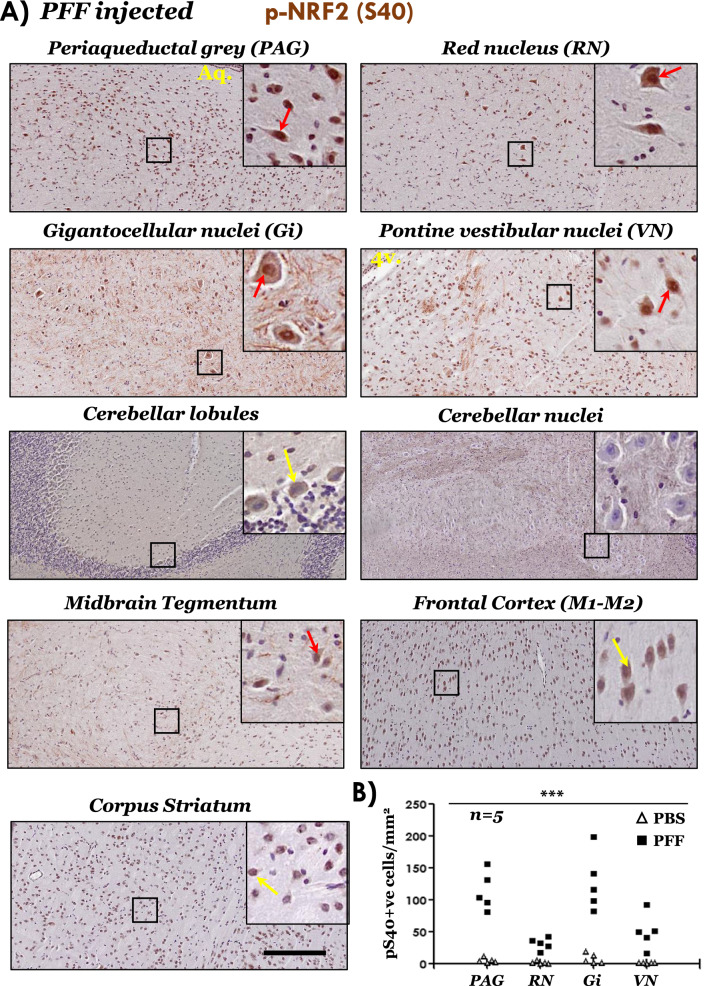Fig. 4.
Immunostaining of phospho-NRF2 (S40) in the brain regions of PFF aSyn injected M83+/+ mice. A Representative IHC images showing phospho-NRF2 (S40) immunostaining with distinct nuclear staining in brainstem regions (red arrows). Also, notice the predominantly cytoplasmic staining in cerebellar lobules (purkinje cells), motor cortex and corpus striatum-yellow arrows (10 × low magnification views and 40 × magnified views in the insets; scale bar = 200 µm; Aq. in the image showing PAG, cerebral aqueduct; 4v. in the image showing vestibular nuclei image, 4th ventricle). Bregma co-ordinates for the brain regions were determined, according to Paxinos and Franklin: (Bregma, − 3.63 mm) midbrain at the level of superior colliculi showing PAG, red nucleus and tegmentum; (Bregma, − 5.79) pontocerebellar junction showing cerebellar nuclei, cerebellar lobules (cb1-5), vestibular nuclei and pontine gigantocellualr nuclei (Gi); and (Bregma, 0.73 mm) forebrain showing motor cortex (M1 and M2) and corpus striatum. Also see Additional file 1: Fig. S5A (PBS injected cohort) and Additional file 1: Fig. S6B, C (additional high resolution data from the PFF and PBS cohorts). Primary antibody in A: p-NRF2 (S40)-PA5-67520. B Semi-quantitative analyses of p-NRF2 (pS40) immunopositive cells in the indicated brain regions of PBS or PFF injected M83+/+ mice. Individual data points represent p-NRF2 (pS40) cell counts/mm2/region in each animal of the respective cohort, with PBS cohort being depicted as blank triangles and PFF as the black squares. (PAG periaqueductal grey matter; RN red nucleus; Gi pontine gigantocellualr nuclei; VN pontine vestibular nuclei; one-way ANOVA, ***p < 0.0001; n = 5/group)

